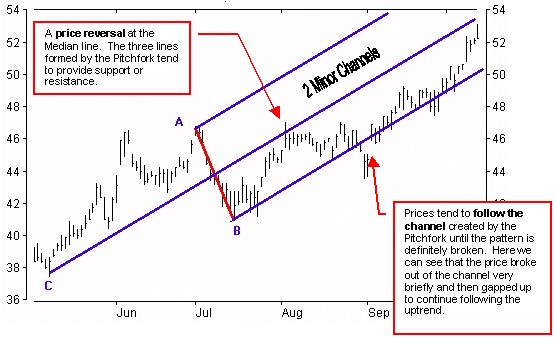
Andrews' Pitchfork was developed by Dr. Alan Andrews, based on what he called his "Action/Reaction" techniques. Originally called the "Median Line Study," this pattern is based on a set of lines drawn from peaks and valleys on a price chart. When linked together, the arrangement of lines closely resembles a farmer's pitchfork.
Dr. Andrews' median lines, and the pitchfork pattern, often indicate lines of support or resistance where prices tend to stall out or reverse.

Andrews' Pitchfork is plotted on a price chart as follows:
This is a quick introduction to the Pitchfork technique; Dr. Andrews' price study methods were typically much more complex than what I've shown here. He also counted waves using what he called the "0-3/4 pivot count rule" and the "5 count probability rule."
Watch for reversals when the price approaches or penetrates the lines of the Pitchfork. As with any trendline, the more often support or resistance is confirmed the more reliable the line can be considered. In the example above, the lower channel managed to contain most of the price activity - not perfectly - but enough to indicate that the channel was indeed providing important support and resistance.
Also see Trendlines and Breakout Patterns